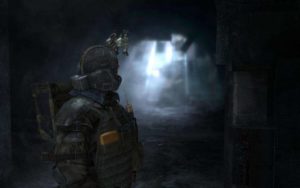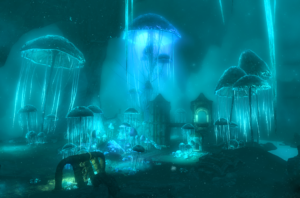Accessible Music
After much contemplation about what to do for my project, I have landed on my final project concept: Accessible Music. Accessible, meaning that it can be useful for people with disabilities (in particular, the deaf community). The idea of this project is to provide a way to enhance the experience of music for people with hearing disabilities.
Project Idea
For my Senior Project, I wanted to delve into this topic of accessible music and make something that can potentially benefit non-music people and deaf people. In regards to non-music people, I find that many people shy away from learning music because it is either too time consuming or they think it is too late to start and would be too difficult. I want to make music easier to experience and easier to learn. This way, everyone can enjoy music without any limitations.
My project will include a musical piece accompanied by a visual representation of each individual note and timbre with colors and tone. The goal for this is for someone to be able to identify the instruments and notes used just by listening to it (as opposed to reading the sheet music or seeing the Logic file). In addition to this, there will be an active interaction element to my project. Through the use of a MIDI keyboard, I will allow the user to play around with the notes and timbres so that they themselves can see the difference in colors with each note and instrument. Ideally, a deaf person will be able to learn the difference between notes and timbres and see how music is represented visually. Through the use of color, shapes, tints, and shades, I will visually represent music in a way that can benefit people with no music experience (or hearing experience).
Inspiration
Originally, my inspiration for this project stemmed from synesthesia, the body’s ability to link one sense to another. Specifically, I have always been intrigued by chromesthesia, the link between sight and sound. For people who have chromesthesia, they see colors and certain shapes every time a musical note or sound are heard. Typically, these people also have perfect pitch, another phenomena that fascinated me. Perfect pitch is the ability to recognize any pitch without a reference pitch or key. Since I have spent my whole life surrounded by music performance and theory, I kept wishing and dreaming that one day I will wake up and be blessed with perfect pitch and chromesthesia. “All I want is to see colors when I hear notes and be able to identify those notes. Is that so much to ask?” Apparently not. Anyone can actually train themselves to have perfect pitch and synesthesia. All it takes is a lot of training and associations between certain colors and notes. After doing a bit of research I realized that chromesthesia is not everything I thought it was.
I watched a YouTube video of this woman who has chromesthesia and how she sees music. In my head, I always envisioned chromesthesia being a wonderful rainbow of colors and shapes that makes life become one giant art piece. In the video, I noticed that instead of rainbows, I saw a few colors projected at different parts of the screen. There were a few main colors (green, yellow, blue), and they would change their position on the screen based on how high or low the note was. Even though I have spent years training my aural skills, I could not identify the notes and their relation to each other. I was partially heartbroken that my lifelong dream was not the reality which stood before me on a YouTube video.
Lost and confused, I wondered what I should do for my senior project. Should I be true to synesthesia and accurately represent what it should look like? Or should I do it my way and show a variety of colors and tones to accurately represent notes? I officially decided that being able to visually represent each note accurately is more beneficial than staying true to synesthesia. Instead, I am considering this project an inspiration from visual music; a way to experience music with more than one sense.
Tl;dr: Synesthesia originally inspired my project. As time went on, I was more inspired to accurately represent notes to benefit people with no music/hearing experience.
Originality and Usage
I can see my project being beneficial outside of the Senior showcase. With a lot of projects I have seen involving music and visuals, it’s more so along the lines of “oh, that looks nice.” Sure, it’s cool to look at, but wouldn’t it be so much more exciting if people can actually benefit from it? It’s one thing to make a project that “looks nice.” It’s a totally different story if the project looks nice AND has a use other than its visual aesthetics. As I’ve discussed before, I would ideally want deaf people to be able to use my project as a way to experience music. Since deafness prevents them from being able to hear music, I want to draw on one of the other senses to enhance their musical experience. Not only does their experience change, but they can also potentially learn music more easily by having the notes visually represented. Of course, this project is not limited to the deaf community. I think that having a visual representation of music can make the learning experience of music that much easier for anybody. I see a potential use of my project for almost everybody across the spectrum. For those that aren’t interested in learning music or already know music, it’s visually and audibly pleasing. For those that want to learn music, it makes the learning experience easier. For those that are deaf, it completely changes their experience with music and can provide a useful way to learn music without hearing it. From those that have no interest or skill in music, to those that spent years learning music, to those that physically cannot hear music, I see a benefit that visual music can have on each of these groups.
In the past, there have been countless examples of visual music throughout history. At concerts, we see colored lights associated with certain songs and moods all the time. Visual music has been done before. But has it been catered to the deaf community? From my understanding and research, there has been no solid evidence towards accessible music for deaf people. Technically my idea for visual music is not original, but my goals for this project are original and have not been implemented before.
Technical Implementation
Although I am still in the beginning phase of this project, I have some ideas of have I can create this project technically. For a prototype, I might use a Makey Makey and assemble a Max patch to match certain pitches and colors. The idea is that each note will have its own color. For example, C can be blue, where C1 will be a navy blue and C8 will be a baby blue. Also, each MIDI timbre will have its own tint or hue to it. For example, a violin may have a brownish hue to it, whereas a flute may have a blueish hue to it. If a violin played a C4, it will look like a royal blue mixed with some brown undertones. For the final project, I may use a MIDI keyboard to make the interactivity more user-friendly. As for the musical piece, ideally I would like to compose a piece showcasing a variety of different instruments and notes. If this proves to be too difficult and time consuming, I can use an existing musical piece not bound by copyright, so long as I have the score. Once I have the piece, I will create a visual representation of the notes and instruments through Aftereffects, with the colors and tones being the same as the ones used in the interactive segment. First and foremost, I will create the interactive element since that is the most important part of this project. After that, I will work on the visual music demo.

